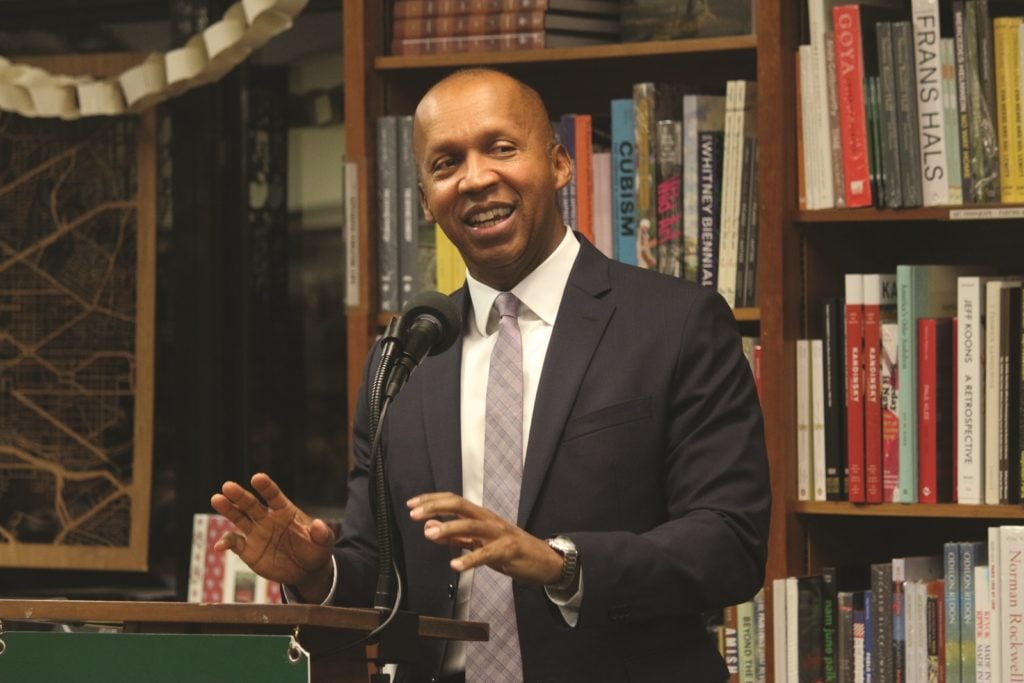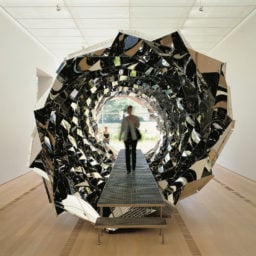Countries from Germany to Rwanda have erected so-called “museums of conscience” devoted to reckoning with the darkest episodes in their history. At a moment of heightened struggles over the symbols of racism across the United States, the Alabama-based Equal Justice Initiative (EJI) is looking to add to that catalogue with a new institution whose name says it all: The From Enslavement to Mass Incarceration Museum.
Scheduled to open next year in Montgomery, Alabama, the new museum will focus on telling a story that connects the dots from slavery through segregation to the well-documented and dramatic disparities within the criminal justice system today. In service of this narrative, it will feature artifacts, but also more high-tech attractions, including virtual reality that promises “to immerse visitors in the sights and sounds of the domestic slave trade, racial terrorism, and the Jim Crow South.”
The story will be amplified by a collection of work by an extensive roster of modern and contemporary African-American artists, including John Thomas Biggers, Sanford Biggers, Elizabeth Catlett, Titus Kaphar, Jacob Lawrence, Glenn Ligon, and Hank Willis Thomas.

Elizabeth Catlett, Virginia (1984). Courtesy From Enslavement to Mass Incarceration.
New York firm Local Projects has worked with EJI to design the facility, which sits on the site of a former slave warehouse. Also in Montgomery, a memorial designed by MASS Design Group with EJI will focus more closely on the phenomenon of lynching.
Founded in 1989, and led by lawyer Bryan Stevenson, EJI has a staff of about 50 and works to liberate the wrongfully incarcerated. (The nonprofit has been a major beneficiary of Agnes Gund’s Art for Justice Fund, which was seeded by her $150 million sale of a work by Roy Lichtenstein.)
The history of the organization is described in Stevenson’s extraordinary 2015 memoir Just Mercy, hailed by the New York Times‘s Nicholas Kristof, who wrote that Stevenson “may, indeed, be America’s Mandela.” Stevenson has argued five times before the Supreme Court, and is a MacArthur foundation “Genius” grantee.
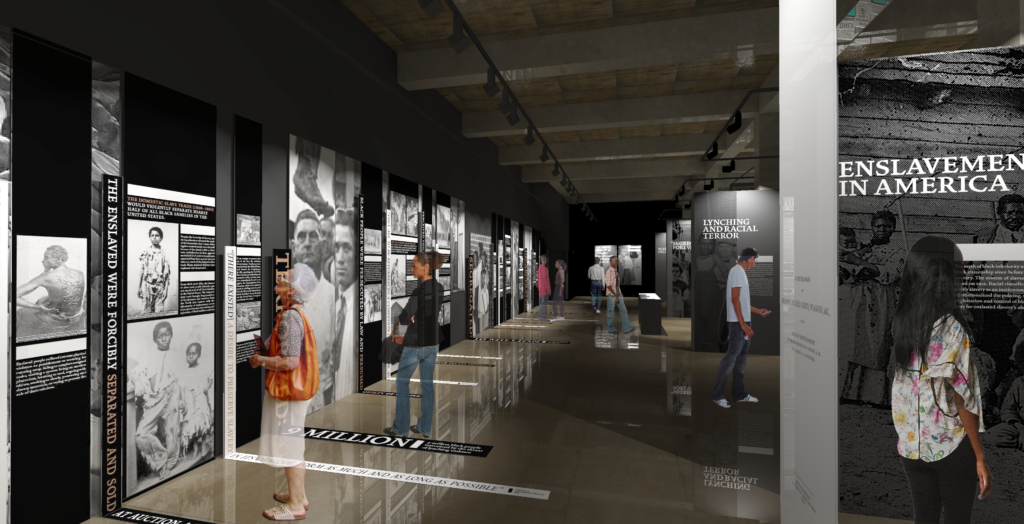
A rendering of the museum From Enslavement to Mass Incarceration, courtesy of the museum.
Recently, Stevenson spoke with artnet News by phone about the current status of America’s reckoning with its past; where EJI’s new institution fits into the landscape of museums of conscience; and why such a museum is long overdue—but at the same time has only now become possible.
It seems as if we’re reaching a critical mass in discussions of slavery and its legacy, with Steve McQueen’s film 12 Years a Slave, the reboot of the television series Roots, the opening of the National Museum of African American History and Culture, and the Whitney Plantation Museum, a private institution memorializing chattel slavery. Do you agree that we’re at a critical moment, and if so, what might explain this?
What’s interesting to me is that it’s been only in the last few years that we’ve begun to even talk about slavery in a meaningful way. Slavery was the defining feature of America in the 18th and 19th century. It has shaped this country’s economic and political and social life, and to some extent its cultural life. That we are only now beginning to see significant cultural institutions emerge to address that legacy is actually revealing about how committed we have been to not talking about this. We’re just getting started, frankly.
What do you suppose explains that tardiness?
The legacy of slavery was so devastating that we’re really just getting to a point where it feels possible to do so. When you’ve been enslaved and now you’re being terrorized by lynching, you don’t have the capacity to talk about these histories. When you’re dealing with Jim Crow and mass incarceration and disparities in health and education and opportunity, it’s hard to look back. So we’re just getting to a point where it’s sensible to put the struggle in historical context.
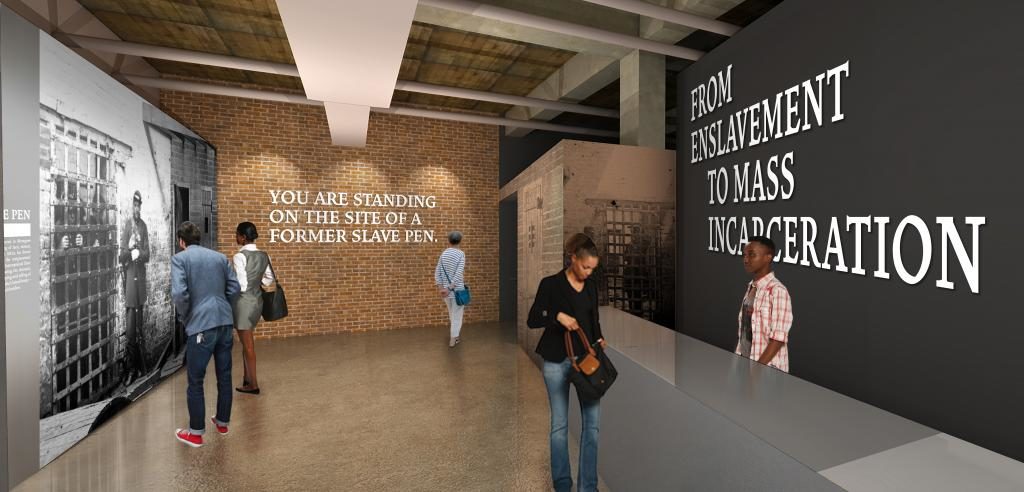
rendering of the museum From Enslavement to Mass Incarceration, courtesy of the museum.
Are you experiencing any pushback from the African-American community? Is there any argument that we should focus on uplifting imagery?
Not really. For a long time, the African-American community coped with the trauma and pain and anguish of this history by resolving to just look forward. Fifty years ago, it would have been harder to overcome that. And while I think that mindset has served the African-American community well, it’s now clear that we are not going to make further progress without talking about these histories.
Rather than pushback, in fact, we’ve gotten very strong support. Of course there has been some hesitation because African-Americans had never been allowed to think about what they want. They’ve had to think about what’s going to happen to them in reaction by white people, from the dominant majority.
I learned reading your book Just Mercy that EJI has received numerous bomb threats and similar intimidation. Even though I knew you came out alive, as you were driving through the Alabama countryside doing your work getting African-American and poor folks out of prison, I was scared for your safety. Have you seen any pushback from white folks and the larger community about this museum, or do you expect to?
I don’t think there’s any question that after 150 years of silence, it’s going to be provocative to see this legacy made plain. So there has been some pushback, but I just don’t think we can be deterred.
When we finished our 2013 report “Slavery in America: The Montgomery Slave Trade,” we just wanted to place markers downtown at the sites of slave warehouses and marketplaces. When we proposed a project about that history, they [the authorities] said, sure, if you have accurate information we’ll put them up. But then they retreated and said no. That would be too controversial.
There are 59 markers and monuments to the Confederacy there. They are everywhere. But we as a society have been unwilling to say a word about slavery. So yes, some people will be challenged and provoked, but we have to accept that as part of the challenge.
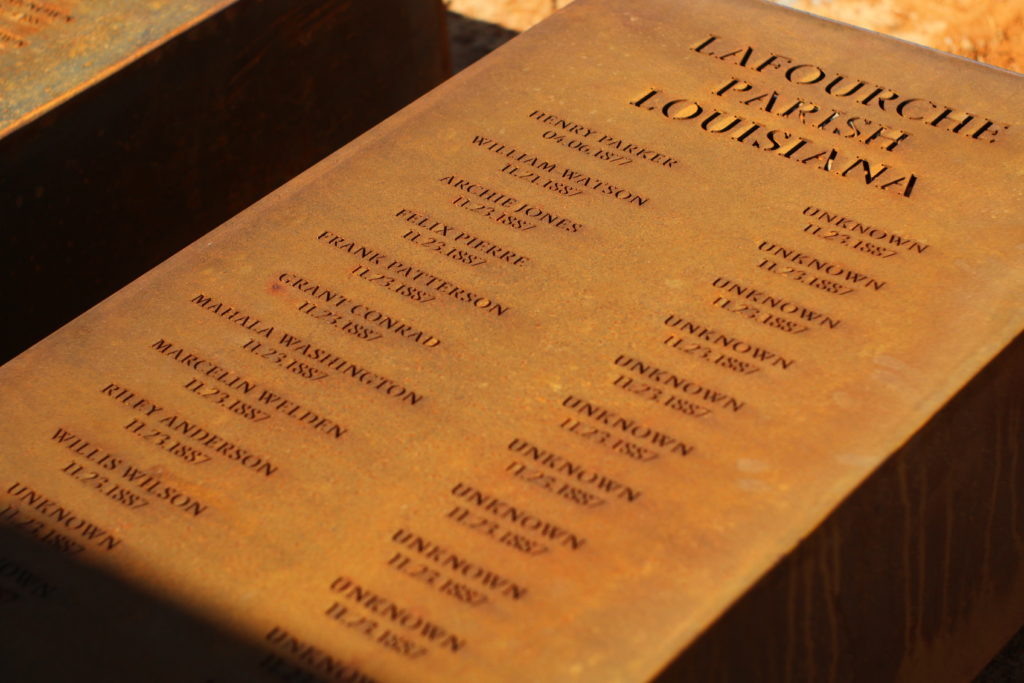
A monument to lynchings in Lafourche Parish, Louisiana, will be on view in the museum.
In talking about this project, you mention South Africa and Rwanda and Germany as countries that have museums of conscience. I wonder what you are drawing from those institutions, and on the other hand what makes this institution unique?
In South Africa there’s been a conscious effort to educate people about Apartheid, and cultural institutions seem committed to this notion that we can never forget about the destruction created by it. There are sites everywhere that contextualize the new South Africa within the history of Apartheid. It’s the same in Rwanda. People insist that you understand what people went through.
What distinguishes all those countries is, one, that they’re actually talking about their history, but two, that they have cultural institutions that are narrative in structure.
The Apartheid Museum in Johannesburg has a point of view and it is addressed culturally and artistically. The Rwandan museum incorporates human skulls in its structure—that’s how powerfully people want to express their grief. There’s no debate about the horror of the Holocaust, no distance from the ugliness.
While I’m grateful to now have the NMAAHC, and I’m pleased we have the National Civil Rights Museum, we don’t have narrative museums that tell the story of our history in a way that moves you from point A to point B.
What role do you see art playing in the museum?
We’re working very closely with a number of artists. There will be photography that we have created to try to humanize what slavery represents. At the time, no one was using photography to document slavery, so we don’t have a visual record. We have the iconic photo of Sergeant Gordon, a slave who displays his back to show scarring from whipping, but there aren’t a lot of images like that.
We did photography with models in chains to create a visual of what the body looks like when bound with these emblems of bondage and confinement. We’re creating films and videos that dramatize the domestic slave trade so people can have a visual experience of being forcefully transported from the upper South to New Orleans and the lower South. Video makers are helping us, through animation and through other forms, to tell that story in a visual way.
But one of the most exciting parts of our museum will involve technology. You’ll walk into a space that will replicate a slave warehouse. There will be pens that will look like jail cells, and when you peer in, a hologram of a slave, an apparition, will appear and speak to you about the experience of awaiting sale. We’ve uncovered incredible narratives about awaiting auction and the horror of the separation from their families.
Technology allows us to create an experience you’re only seeing in places like Disney. You can see the ghosts of a former slave warehouse. When you walk into the main section, we’ll have language from catalogues advertising slave sales printed on banners. It will be a really powerful space.
